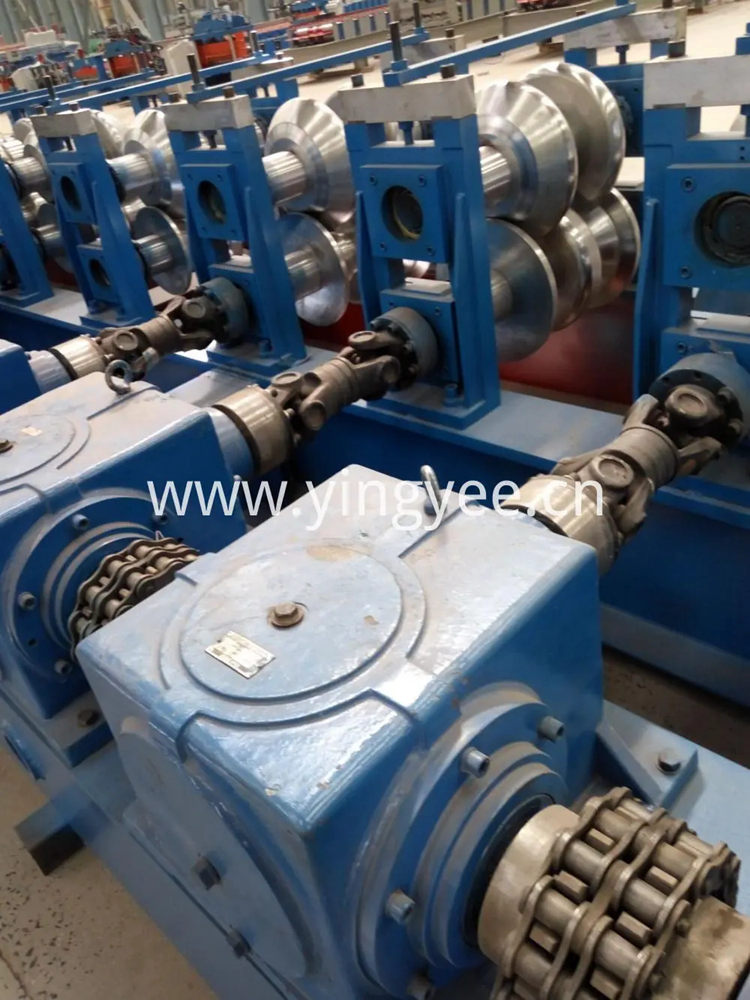
Grain Storage Roll Forming Machine Revolutionizing Agricultural Storage Solutions
In recent years, the agricultural industry has witnessed significant advancements in machinery and technology, paving the way for more efficient and effective grain storage systems. One of the standout innovations is the grain storage roll forming machine, a vital tool in the production of robust storage structures that cater to the growing needs of farmers and grain handlers worldwide.
Understanding Roll Forming Technology
Roll forming is a continuous bending process that involves passing metal sheets through a series of rollers to achieve a desired cross-sectional profile. This method is particularly beneficial in producing long lengths of material, which is crucial for creating bulk storage solutions such as silos and grain bins. The grain storage roll forming machine leverages this technology, allowing for the rapid and cost-effective manufacture of components that can be assembled into large-scale storage systems.
Key Features of Grain Storage Roll Forming Machines
1. Customizable Profiles One of the primary advantages of roll forming is its ability to create custom profiles tailored to specific storage requirements. Grain storage roll forming machines can be adjusted to produce various shapes and sizes of panels, ensuring that the final product meets the specific needs of the agricultural sector.
2. High Efficiency and Speed The continuous nature of the roll forming process allows for high production rates. A grain storage roll forming machine can produce significant amounts of material in a shorter span, which is essential for meeting market demand. This efficiency is particularly critical during peak harvesting seasons when quick turnaround times are necessary.
3. Durability and Strength Grain storage bins must withstand various environmental factors, including moisture, temperature fluctuations, and the weight of the stored grain. Roll-formed products are known for their structural integrity, as the process enhances the mechanical properties of the metal. This results in robust storage solutions that are less prone to deformation and wear over time.
4. Cost-Effectiveness By utilizing roll forming technology, manufacturers can minimize waste, reducing overall material and production costs. The streamlined process also means lower labor costs, as fewer operators are needed to run the machinery, making grain storage solutions more economically feasible for farmers.

5. Ease of Assembly Components manufactured by grain storage roll forming machines are designed for easy assembly. This user-friendly aspect is critical for farmers who may not have extensive construction experience, allowing them to set up their storage systems with minimal complexity.
Environmental Considerations
As global awareness of environmental issues increases, the agricultural sector is also adopting more sustainable practices. Grain storage roll forming machines typically employ metal materials that can be recycled, contributing to a circular economy. Furthermore, these machines are designed to be energy-efficient, reducing their carbon footprint during operation.
The Future of Grain Storage Solutions
The demand for efficient grain storage solutions is on the rise, driven by an increasing global population and the need for enhanced food security. As a response, innovations in grain storage roll forming machines are expected to evolve. Future advancements may include automation, which can further enhance efficiency and precision, as well as the integration of smart technologies for monitoring storage conditions.
Moreover, as the agricultural landscape changes with climate variability, adaptive storage solutions will be necessary to protect grains from diverse environmental challenges. Manufacturers of roll forming machines are likely to focus on developing products that can accommodate these changing needs.
Conclusion
The grain storage roll forming machine represents a significant advancement in agricultural technology, providing farmers with durable, efficient, and cost-effective storage solutions. By combining the benefits of roll forming with the specific requirements of grain storage, these machines are revolutionizing how the industry addresses storage challenges. As technology continues to advance, the future promises even greater enhancements that will ensure food security and sustainability for generations to come. Investing in such innovations is not merely an option for farmers; it is becoming an essential strategy for thriving in the modern agricultural landscape.